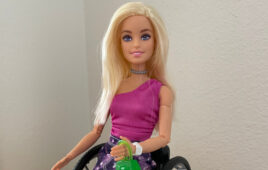How far would a father go to find the right seating & mobility solution for his young son?
Gordon C., a father in Western Australia, began looking for a replacement manual wheelchair for his son Lochan when the boy was 8 years old. Lochan had T6 complete paraplegia after undergoing surgery at age 4 to remove a tumor from his spinal cord. Unhappy with Lochan’s previous chair and the lack of pediatric expertise where they lived, Gordon took his search to the Internet. He hoped Lochan’s next wheelchair would:
- Be light enough to easily to lift into their car.
- Allow adjustment for growth.
- Accommodate a rigid backrest, to be purchased separately.
- Accommodate off-road aftermarket systems for outdoor play.
 sci.rutgers.edu), Gordon found information on Icon Wheelchairs. While Lochan’s funding source initially balked at purchasing a wheelchair from overseas, Gordon reports, “Thankfully, common sense prevailed in the end.”
sci.rutgers.edu), Gordon found information on Icon Wheelchairs. While Lochan’s funding source initially balked at purchasing a wheelchair from overseas, Gordon reports, “Thankfully, common sense prevailed in the end.”
Working with Icon co-founder Jeff Adams, Gordon took Lochan’s measurements and sent them over. They decided on an Icon A1 wheelchair with anti-tips added. For his first two years with the Icon, Lochan used a JAY 3 backrest; today, he uses a Spex Vigour rigid backrest with lateral supports.
Asked the outcome of using the Icon, Gordon says, “Comparing Lochan’s chair with his previous one — which he stopped using over two and a half years ago — the Icon’s overall footprint is significantly smaller. The Icon is narrower, due to its ability of its width to be adjusted. And the Icon is shorter. Whilst it could be argued that his previous chair was purchased with incorrect measurements, the fact that there is so much adjustment on the Icon means that any discrepancies in the measurements taken during the ordering process can be resolved relatively easily.”
To further reduce the Icon’s weight, Gordon says he used the adjustability of the angle of the wheelchair’s back canes to attach the JAY 3 backrest using just Velcro fasteners, though he added two lightweight pipe clamps after Jeff advised him to. The newer Spex backrest is attached using Zip ties rather than the clamps.
![]()

